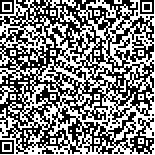下载中心
优秀审稿专家
优秀论文
相关链接
摘要

不完全监督分类是研究在只有目标类训练样本的情况下如何准确地将目标类从数据集中提取出来。在许多遥感应用问题中,往往只需要从遥感影像中提取某一类地物。如果分类过程中只要选取目标类训练样本,将节省在训练样本选取过程中的大量人力物力。因此不完全监督分类是一个值得研究的遥感分类问题。提出了一种基于加权无标识样本支撑向量机(WUS-SVM),并在其基础发展出一种不完全监督分类方法。该方法分3个步骤:(1)在影像中随机选取一定量的无标识样本,将它们作为具有不同权重的非目标类训练样本;(2)用目标类的训练样本和加权无标识训练样本一起训练WUS-SVM,得到初步的分类器;(3)利用初步的分类器确定无标识样本的类别,并与原目标类训练样本一起再次训练SVM得到最终的分类器。通过对模拟数据和遥感影像的分类试验初步证明了该分类方法的有效性。
In many real world of remote sensing applications, one may be interested in identifying if the samples belong to one class from a remote sensing imagery. It is always expensive in terms of time and manpower to collect an exhaustive training sample set. Therefore, it is useful to design a classifier, by which a user needs only to collect training samples of the objective class for identifying if a pixel belongs to the class of interest or not. This is the technique of partially supervised classification. In this paper, we present an algorithm called Weighted Unlabeled Sample Support Vector Machine (WUS-SVM), based on which a new partially supervised classification method is proposed. In this method, a certain amount of unlabeled samples is first randomly selected from the test set and labeled as other classes with different weights. Second, a primary classifier is defined by WUS-SVM, in which a hyperplane is constructed to separate training samples of objective class and other classes with low weighted error and large margin width. Third, the primary classifier is used to determine the class of unlabeled samples. Thus all training samples are labeled and again they are used as training samples of support vector machines to obtain a final classifier, which is used to classify other test samples. Experimental results with both simulated and real data sets show that the proposed method is very effective.

